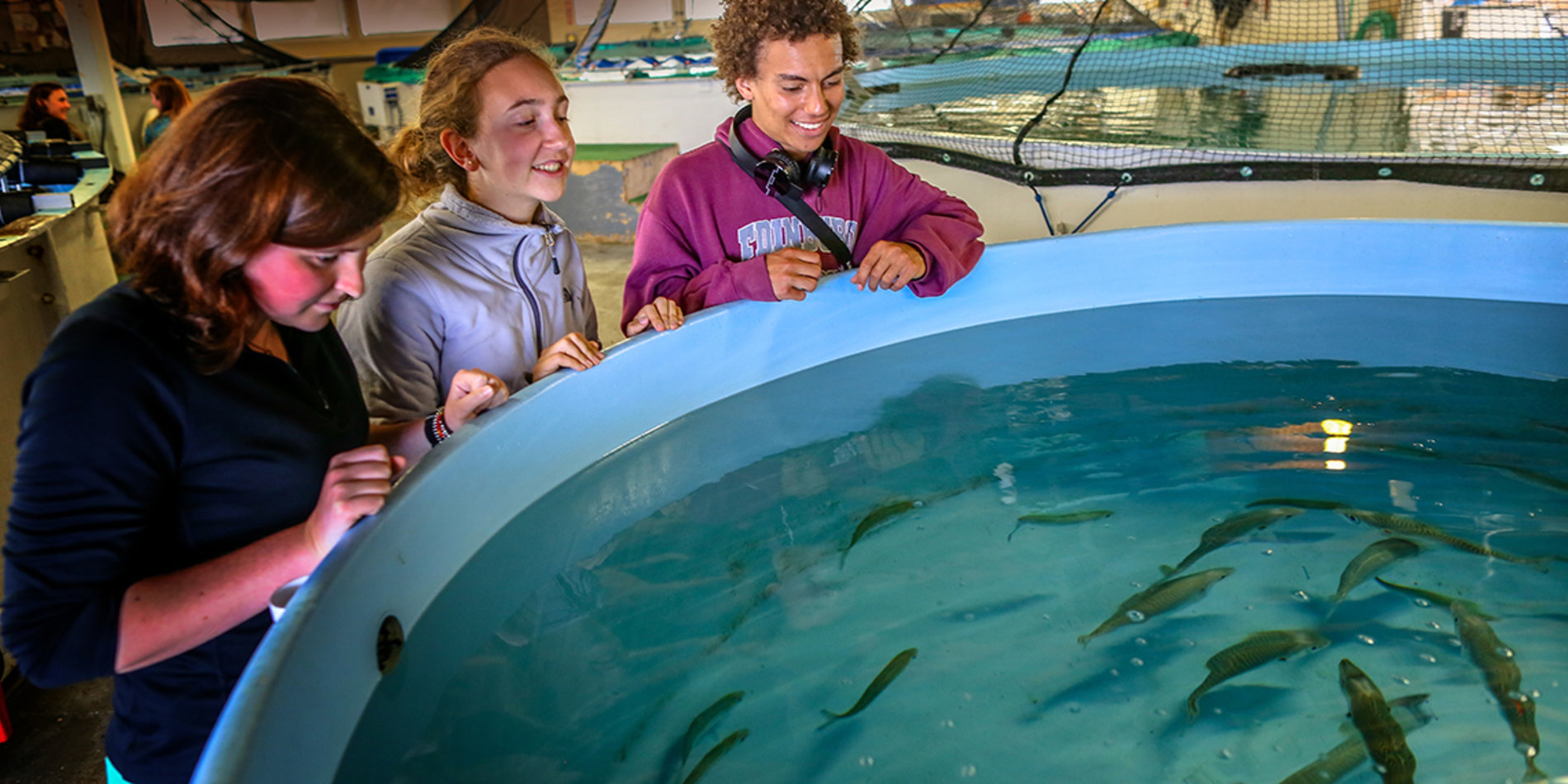BIO 12N: Sensory Ecology of Marine Animals
General Education Requirements
Course Description
In this course, we will explore the sensory lives of marine animals in the context of the environments they inhabit and the sensory systems they possess. Animals are subjected to enormous and varied forms of energy—light, temperature, pressure, electrical, mechanical, chemical, and even social. Some fraction of that energy is very useful in guiding behavior, but in order to be meaningful it must first be perceived by the senses and interpreted by the nervous system. We humans think of our "five" senses, but is that really all there is to it? In the deep oceans, the only light is from bioluminescence, yet animals use vision to hunt and to communicate; squid perceive polarized light and not only can they control how it's reflected from their skin, but also they can talk to other squid on a private channel hidden from eavesdropping fishes. Cetaceans communicate across entire oceans using low-frequency sound; sharks sense vanishingly small electrical currents and can "hear" the action potentials in the muscles of their prey. Some fishes and pelagic birds can detect the magnetic field of the earth and use that information to migrate over vast distance; other birds are guided by a faint odor given off by plankton. This is a rich, wonderful, and surprising world of the senses, and we will explore it from the perspectives of ecology, animal behavior, neurobiology, and information theory.
Meet the Instructor: Stuart Thompson

Stuart Thompson graduated from UC Santa Barbara and received his doctoral degree from the joint program for zoology and physiology and biophysics at the University of Washington before coming to Stanford as a postdoctoral fellow. Professor Thompson then joined the faculty of the Department of Biology. His current research concerns the flow of information at synapses between neurons, intracellular signal transduction and Ca2+ homeostasis in neurons, and the physiology of neural stem cells.



